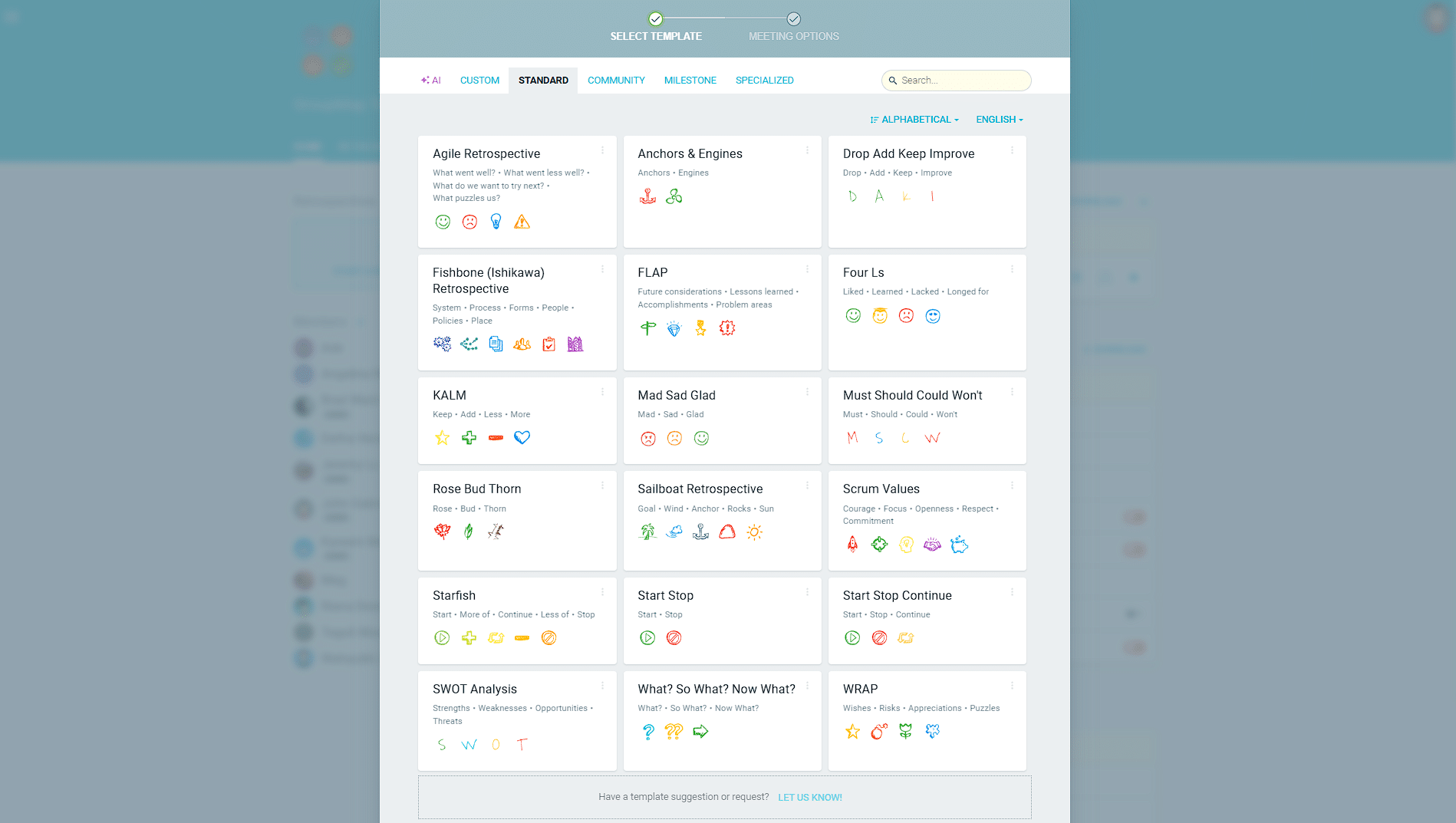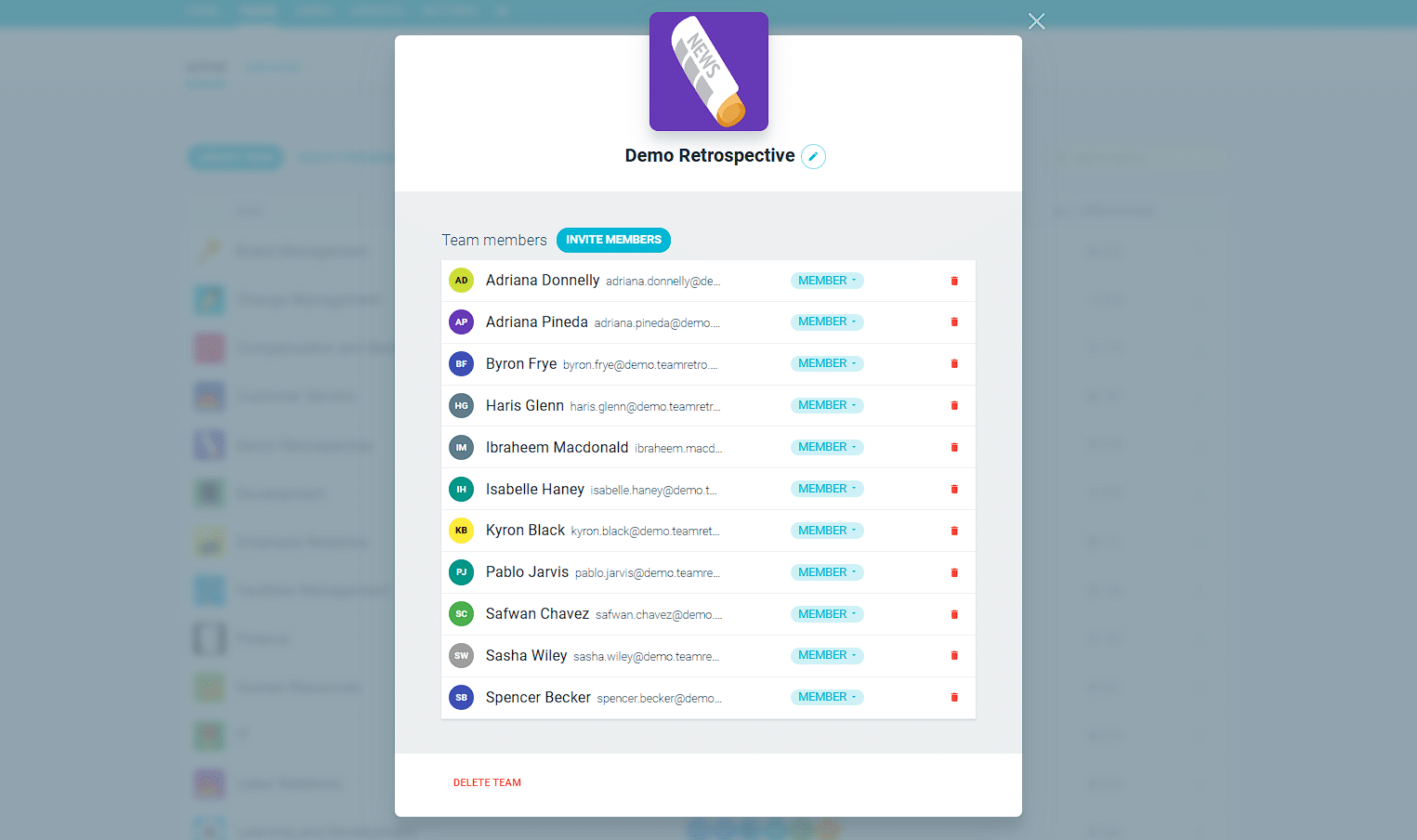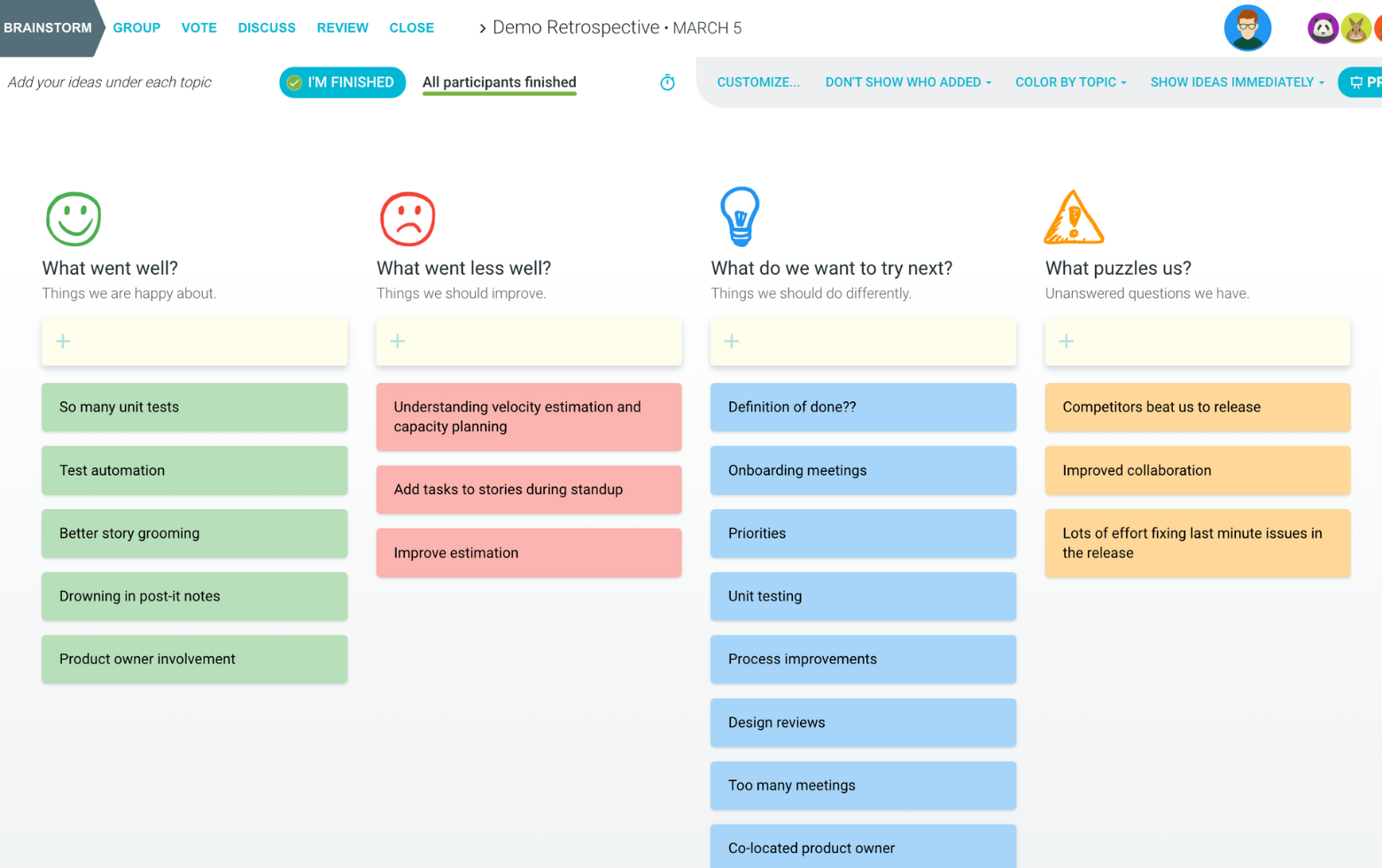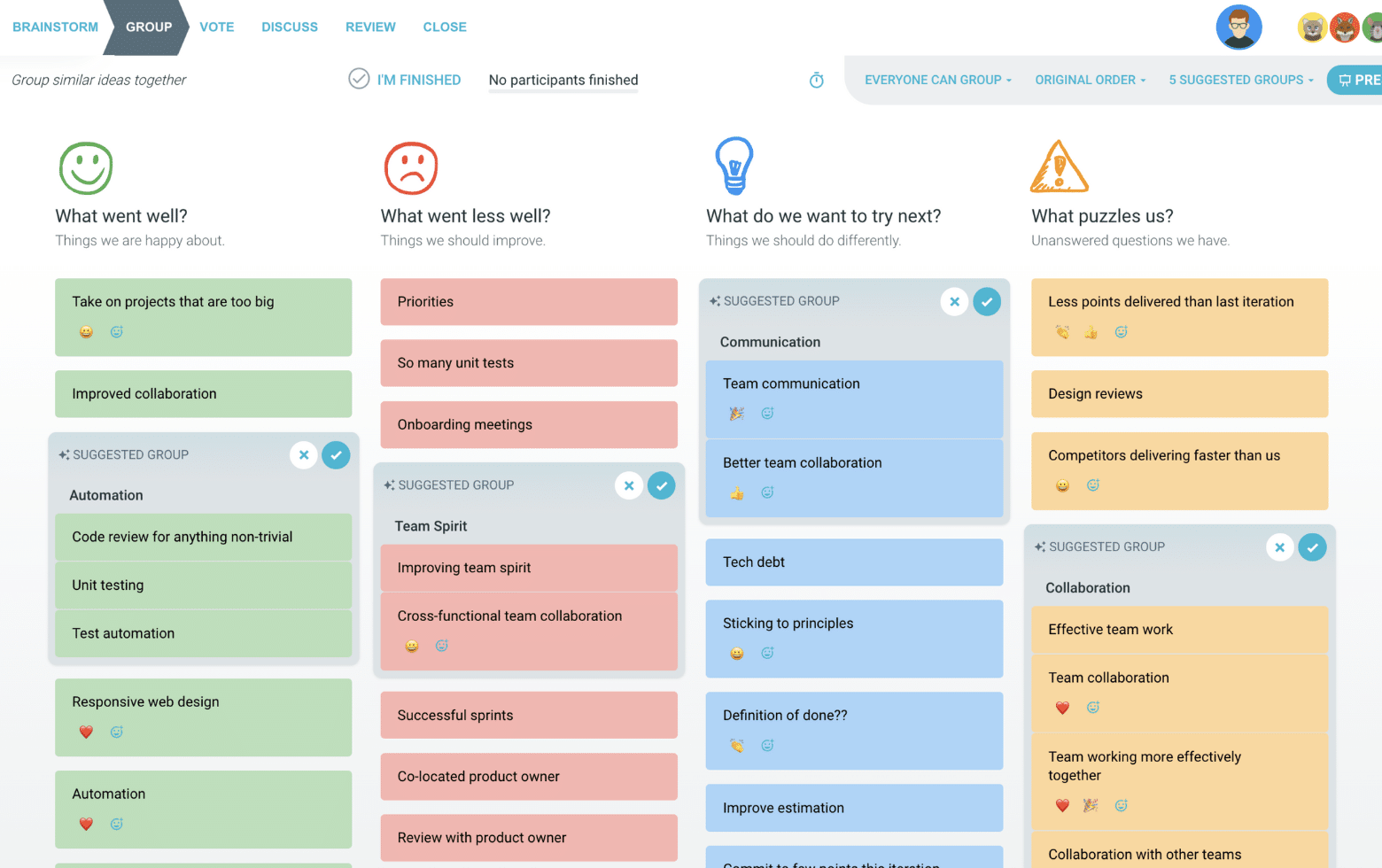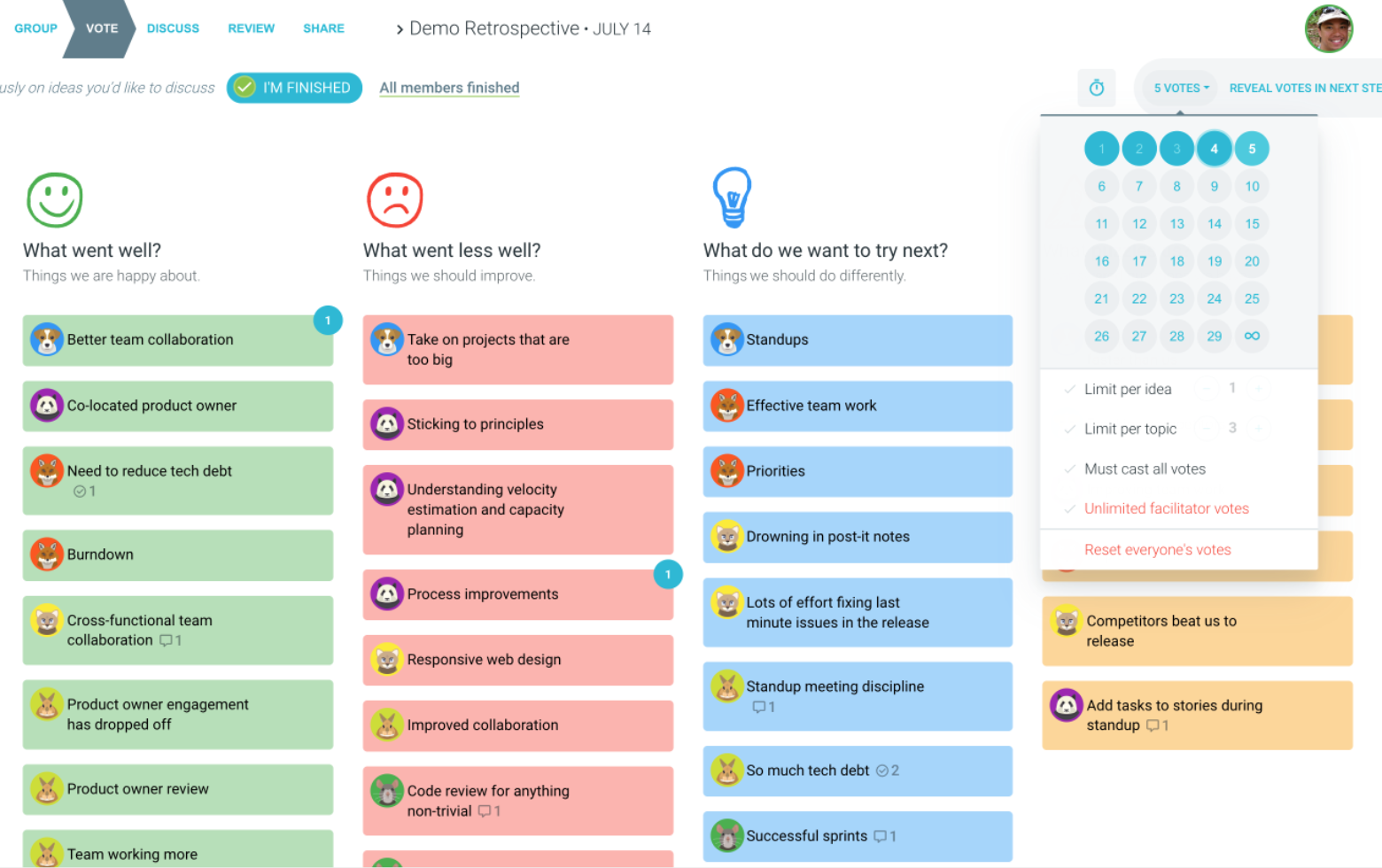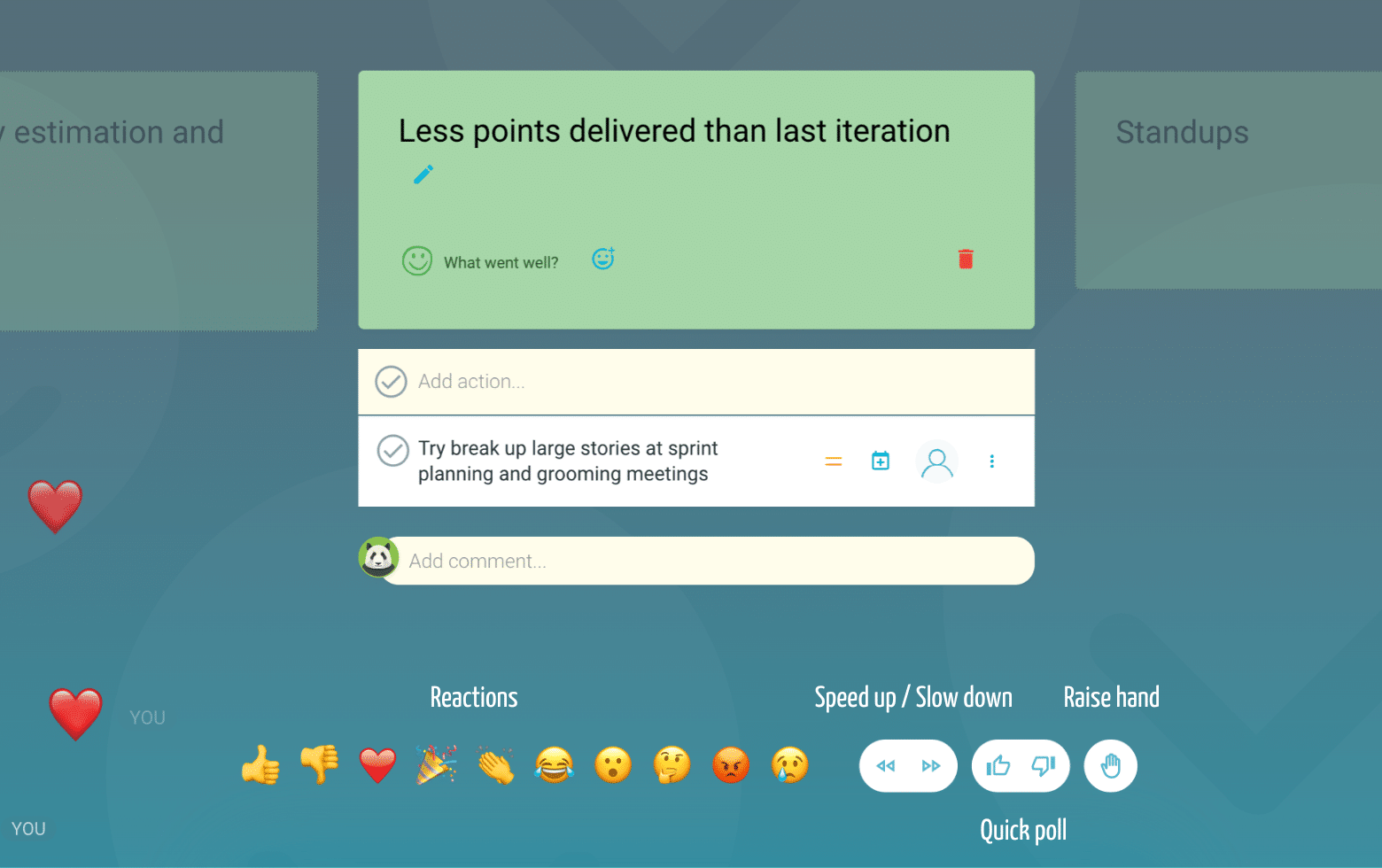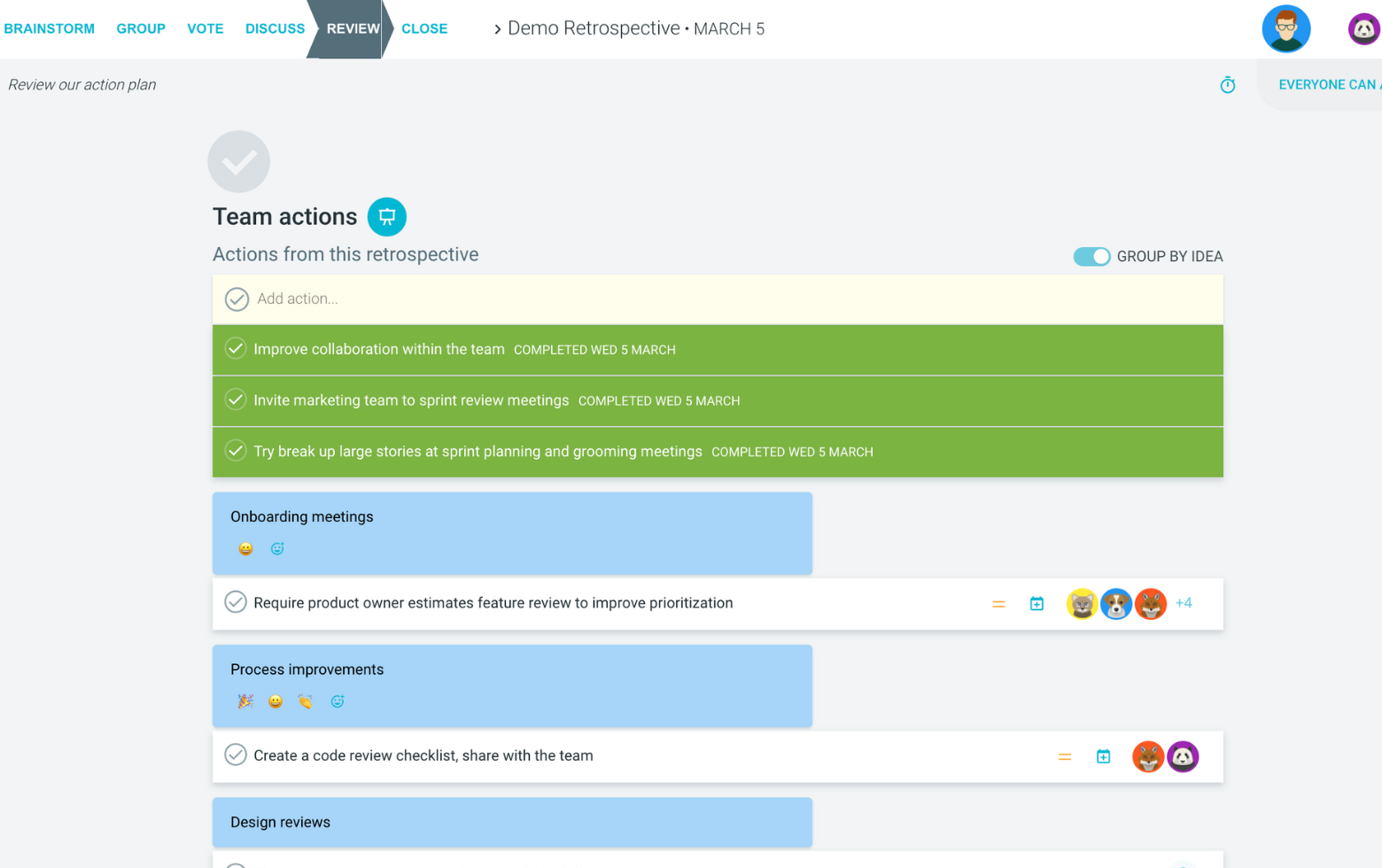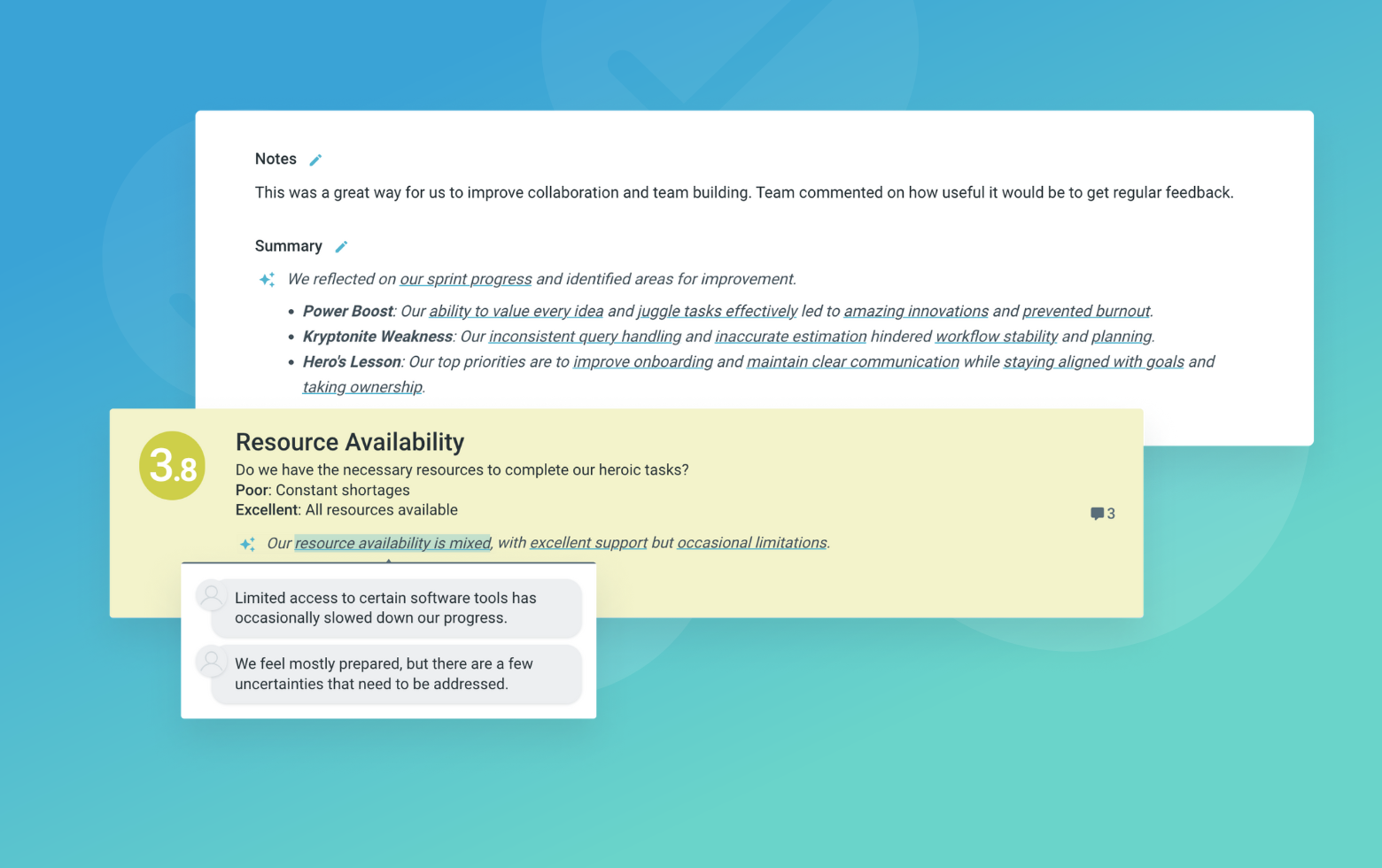The Book Club retrospective transforms your team's sprint review into an engaging literary journey, using storytelling elements to analyze team performance and experiences. By framing the sprint as a book, team members can explore events, challenges, and successes through a creative lens that encourages open dialogue and fresh perspectives.
This format leverages familiar literary concepts like genres, plot twists, and character development to help teams reflect on their work in a more engaging and accessible way. It's particularly effective for teams who might feel stuck in conventional retrospective patterns or who want to inject creativity into their continuous improvement process.
Originally inspired by the power of storytelling in organizational learning, this retrospective format helps teams identify patterns, celebrate achievements, and plan future improvements while maintaining an enjoyable and collaborative atmosphere.
What is The Book Club Retrospective
Genre
If the last sprint was a book, what genre was it and why?
Encourage participants to think metaphorically about the overall tone and nature of the sprint. Different genres (thriller, comedy, drama, etc.) can reveal team sentiment and help identify patterns in how sprints are experienced.
Plot Twists
What were some of the key turning points in the last sprint?
Focus on significant events or decisions that changed the sprint's direction. These moments often reveal important learning opportunities or areas where the team showed resilience.
Key Characters
Who were the key actors from our team that you want to acknowledge?
Encourage specific examples of positive contributions while maintaining inclusivity. This is about celebrating individual contributions within the context of team success.
Next Chapter
What do we want to write in to our next chapter?
Guide the team to focus on actionable improvements while maintaining the storytelling theme. Help translate creative ideas into concrete next steps.
Suggested icebreaker questions
- If you could be any book character, who would you be and why?
- What's your favorite plot twist from a book or movie?
Ideas and tips for your retrospective meeting
- Start with a brief explanation of literary genres to help team members think metaphorically
- Encourage people to build on each other's narrative elements to create a cohesive story
- Keep a balance between creative expression and actionable insights
- Use the storytelling format to discuss difficult topics in a less confrontational way
- Document the 'story' to track patterns across multiple sprints
- Consider reading out some responses in a storytelling voice to maintain the theme
.
How to run effective meetings with TeamRetro
Start Your Session in a Click
Log into TeamRetro and choose your template. Customise questions and the workflow to create your perfect retro for your team.
Create Your Team Easily – No Separate Accounts Needed
Brainstorm Individually – Free From Bias
Smart Grouping for Faster Insights
Fair, Flexible, and Fast Voting
Engage, React, and Capture Key Insights
Walk your team through ideas one by one with Presentation Mode. Stay in sync, spark real-time discussions, and capture feedback with comments, live reactions, and polls—all in one place.
Turn Ideas Into Action
Propose next steps with team buy-in, get AI-powered action suggestions, and keep everything in one place. Committed actions sync to your personal dashboard and integrate with your workflow tools—keeping you on track.
Save, Share, and Stay on Track
Get quick AI-powered summaries, add facilitator notes, and store retrospectives in your library for easy access. Schedule your next session and track published actions to keep your team accountable at the next retro.
Turn Team Data into Actionable Insights
Uncover trends, common themes, and key engagement metrics at a glance. Track sentiment shifts, analyze conversations, and monitor completed actions to drive continuous improvement.
